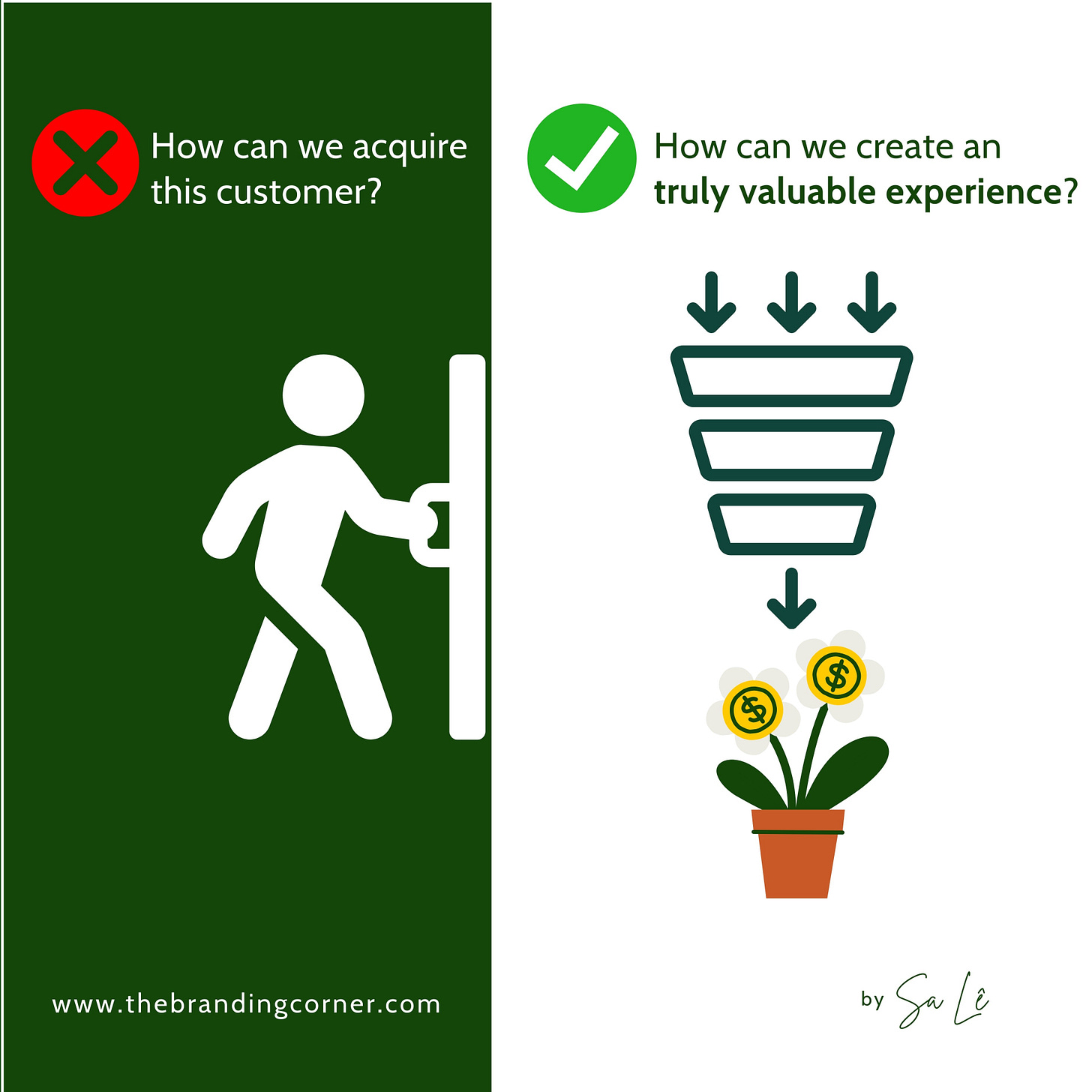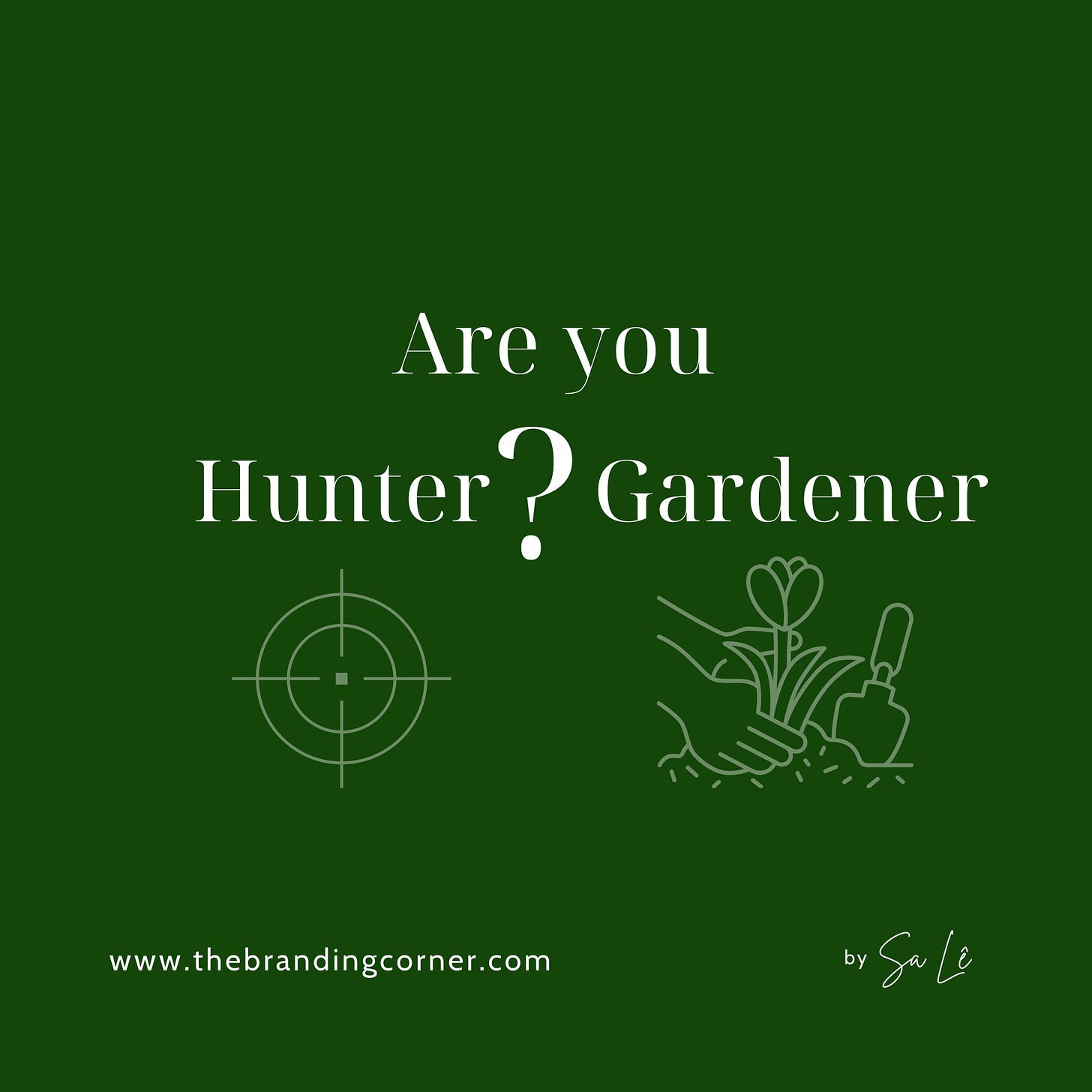Stop hunting, start gardening: A guide to the modern Experience Funnel
The traditional marketing funnel is broken. This post explains the shift from a “hunter” to a “gardener” mindset and how to build an Experience Funnel for lasting loyalty.
A farewell to the traditional marketing funnel
For years, marketers have lived by the rigid code of the traditional funnel: Awareness -> Consideration -> Conversion. It was a simple, linear path that treated customer acquisition like a hunt, with the sole goal of closing a sale. But in today's Experience Economy, where consumers have endless choices and value authentic connection, this model is fundamentally broken. It’s too linear, focuses almost exclusively on acquiring new customers, and ends abruptly at the point of purchase, ignoring the most valuable asset a business can have: its existing, loyal customers.
The landscape has changed profoundly. Success is no longer measured by a single transaction but by the way customers feel about your brand at every single touchpoint—before, during, and long after a purchase. It’s time for a new model, one that aligns with this new reality and transforms marketing from a one-way street into a sustainable cycle of growth. Welcome to the Experience Funnel.
This isn't just a new buzzword; it's a completely different philosophy for growth. This article will break down the Experience Funnel, highlight its core differences from the traditional model, and provide a practical guide to help you shift your mindset from a short-term "hunter" to a long-term "gardener."
1. Deconstructing the Experience Funnel as an infinite loop
So, what exactly is the Experience Funnel? At its core, it’s a customer-centric model that places the overall experience at the center of all marketing efforts. It recognizes that a purchase is not the end of the journey but the beginning of a deeper, more valuable relationship. Unlike the traditional model that pushes prospects through rigid stages, the Experience Funnel is an adaptive, cyclical framework designed to create and nurture long-term brand advocates.
While the traditional funnel is a one-way street, the Experience Funnel is an infinite loop. It consists of interconnected stages that continuously feed into one another, creating a powerful, self-sustaining engine for growth. While the exact stages can be adapted to fit different business models, a powerful framework includes:
Attract: This stage is similar to "Awareness," but with a crucial difference. The goal isn't just to cast the widest net possible, but to attract the right people by providing genuine value upfront. This involves creating high-quality, empathetic content that addresses specific pain points and demonstrates a deep understanding of your ideal customer, pulling them into your orbit naturally.
Engage: Once you’ve attracted a potential customer, this stage is about nurturing the relationship through meaningful and valuable experiences. This isn't about a hard sell or aggressive follow-ups. It's about building trust. This is accomplished through educational content, interactive tools, community discussions, and personalized communication that positions your brand as a helpful, reliable resource.
Convert: This is the point of purchase. In the Experience Funnel, however, this transaction is framed as a significant milestone in the customer relationship, not the final destination. The conversion process itself, from the checkout page to the payment confirmation, must be seamless, intuitive, and reassuring, reinforcing the trust you've already built.
Delight: This is the post-purchase experience, and it's where the Experience Funnel truly differentiates itself. This stage focuses on exceeding customer expectations. It includes everything from the unboxing experience and personalized onboarding to proactive customer support and follow-ups that ensure they get the maximum value from their purchase. A delighted customer is one who feels seen and cared for, even after the sale is complete.
Advocate: This is the ultimate goal and the engine of the infinite loop. When customers are delighted, they naturally and willingly become advocates for your brand. They write glowing reviews, create positive user-generated content (UGC), recommend your brand to friends and colleagues, and defend you in public forums. These advocates then feed directly back into the "Attract" stage by providing powerful social proof, creating a powerful, self-sustaining cycle of growth.
The core difference is profound. The old funnel asks, "How can we acquire this customer?" The new funnel asks, "How can we create an experience so valuable that this customer stays with us and brings others along?"
2. The strategic mindset from a Hunter to a Gardener
Adopting the Experience Funnel requires a fundamental shift in mindset. It’s about moving from the short-term, aggressive thinking of a "hunter" to the patient, nurturing, and holistic approach of a "gardener."
The "Hunter" mindset (Traditional funnel)
Goal: To "close the deal" or "capture" the lead as quickly as possible. Each customer is a target to be acquired.
Focus: Constantly seeking new leads to fill the top of the funnel. The primary metrics are often volume-based (e.g., number of new leads, conversion rate of new traffic).
Nature: Transactional, short-term, and often resource-intensive. Once a sale is made, the hunt begins for the next target, with little thought given to the customer left behind. This approach can lead to high customer acquisition costs and a "leaky bucket" where new customers are constantly needed to replace those who leave.
The "Gardener" mindset (Experience funnel)
Goal: To cultivate a healthy, thriving ecosystem where your customer community can flourish.
Focus: Nurturing existing customers so they "blossom" into loyal advocates who, in turn, attract new prospects that are a good fit for the garden. The metrics are focused on long-term value (e.g., customer lifetime value, retention rate, net promoter score).
Nature: Relational, long-term, and sustainable. The gardener understands that a well-tended garden produces a continuous harvest. They invest in the "soil" (your brand's values and customer support) to ensure healthy growth for years to come.
This shift changes how you allocate your resources and measure success. Instead of pouring your entire budget into top-of-funnel advertising to attract new customers, you begin to invest more heavily in post-purchase support, community building, and loyalty programs. You stop asking, "What's our ROI on this ad campaign?" and start asking, "What's the lifetime value of a delighted customer, and what can we do to create more of them?"
3. The secret weapon turning Customers into Advocates
The final stage of the Experience Funnel, Advocacy, is its most powerful and often most neglected component. A delighted customer who becomes a vocal supporter is the most effective and cost-efficient marketing channel you can possibly have.
Why is advocacy so critical in today's market?
Unmatched trust: In an era of deep-seated skepticism towards traditional advertising, word-of-mouth marketing is king. A recommendation from a trusted friend or peer is infinitely more powerful than the most polished ad. Nielsen data consistently shows that people trust recommendations from people they know above all other forms of advertising.
Extreme cost-efficiency: It costs anywhere from 5 to 25 times more to acquire a new customer than to retain an existing one. Advocates not only stay with you (increasing retention), but they also do the work of acquiring new customers for you, for free. This drastically lowers your overall customer acquisition cost (CAC).
Higher quality leads: The leads generated from customer referrals are often the highest quality. They come with a pre-existing layer of trust and are often a better fit for your product or service, leading to higher conversion rates and longer customer lifetime value.
So, how do you systematically create advocates? It’s not about luck; it’s about a deliberate strategy focused on the post-purchase "Delight" stage.
Actionable tactics to foster advocacy include:
Deliver a "Wow" post-purchase experience: This goes beyond a simple automated "thank you" email. It could be a personalized onboarding process that helps the customer succeed, a beautifully designed unboxing experience that feels like a gift, or a proactive check-in from a real human to ensure they're happy with their purchase.
Build a thriving community: Create a dedicated space where your customers can connect with each other and with your brand. This could be a private Facebook group, a Slack channel, a Discord server, or a dedicated forum on your website. Use this space to provide exclusive content, gather feedback, and make your customers feel like valued insiders.
Implement a simple and rewarding referral program: Make it incredibly easy for happy customers to recommend your brand. The process should be seamless, and the incentive should be valuable for both the referrer and the new customer.
Listen, acknowledge, and act on feedback: Actively solicit feedback through surveys and reviews. More importantly, show your customers that you are listening by acknowledging their input and, where possible, implementing their suggestions. When customers feel heard, they feel valued and are far more likely to become passionate advocates.
Surprise and delight: Occasionally, go above and beyond for your loyal customers. This could be anything from a small, unexpected gift to an exclusive upgrade or a handwritten thank-you note. These small gestures can create an outsized emotional impact and generate immense goodwill.
Conclusion
The Experience Funnel isn't just a new marketing model; it's a more sustainable, human-centric, and ultimately more profitable way to do business. The traditional, linear approach of "hunting" for customers is becoming increasingly ineffective and expensive in a world where trust and relationships are the most valuable currencies.
Success today is not about a one-time sale but about creating a continuous loop of positive experiences that delight customers and transform them into your most powerful marketing channel. By adopting the patient, nurturing mindset of a "gardener," you can cultivate a thriving ecosystem of loyal customers and passionate advocates, building a brand that not only survives but flourishes for years to come.
So, take a look at your current marketing efforts, your budget allocation, your team's KPIs, your communication strategy, and ask yourself a simple question: Are you a hunter or a gardener?





